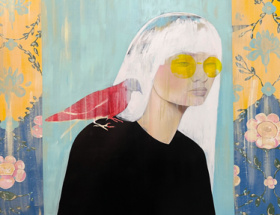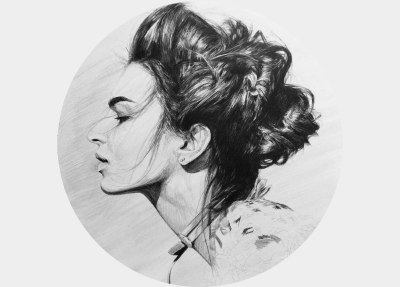From Pop to Porno-Iconicity
By Lilianne Rodríguez
Perhaps KHRONOS should be understood as the last effect of the late postmodern saga in the symbolic production emerging in Cuba. However, it has come to be a new sign of that high post modernity in our visual culture.
If we take into consideration our cultural reality up to the early 1990s (a kind of hybrid between western aesthetics and the unique proposal we recycled from the countries of Eastern Europe) we will inevitably arrive at a question that poses a great cultural paradox: What strange simulacrum was the one we lived in when we emulated essentially the western forms and cultural trends with a pragmatic knowledge of that reality, designed and controlled by the market in all its aspects? And from there, to other many questions: Can we talk of an evident influence of the market and its formal codes on the Cuban art that followed the above mentioned decade? Was (or is) there in our context an artist influenced by the orthodoxy of pop art, immerse in reverting the experience of the market and the cultural industry until turning it into art? Can we talk already in our space of a media conscience without innocence, capable of molding attitudes, customs, styles/simulations of life, among other social performances? Is there any possibility in Cuba for an art of media essence when we are still a disconnected country, with a seven-channel television system where advertising is an anachronism in midst of the propaganda feud?
KHRONOS seems to pose all these questions (though not explicitly) in the chronology of its creations, particularly in those works that analyze the fortune achieved in our context under so many irregular conditions by media art, the technocracy and that already classic form perpetuated in its iconicity that elaborates the hard core of pop art. The aesthetic attitude of this creative duet, the way in which they appropriate U.S. pop as if it were not a foreign tradition inadaptable to our cultural imagery might even seem strained;. But that appreciation would be nothing but a provincial reflex, ignorant of the new flirting insinuated in our environment, if we start the dialogue without being prejudiced by the market codes.
That prefabricated, Suprematist island, victim of the magazine Sputnik during childhood, marked in its youth by the intermittence of legendary video films of Michael Jackson and Madonna, the sporadic presence of Nintendo in some homes and the velvety image of the Backstreet Boys; profaned in adulthood by the porno violence of Bruce Lee, Steven Seagal, Jean-Claude Van Damme, Arnold Schwarzenegger, and Chuck Norris no longer exists; it has become an unrepeatable myth worthy of taking shape in a museum. Today, instead, we awaken to an unsuspectedly technocratic reality represented by icons, images, sounds, virtual spaces… And it is in that change to virtual, in that double (socialist-capitalist; third world-consumer) identity that codes us, in the mythomania and media stress, where the (artistic?) production of KHRONOS makes sense.
While the rhetoric of this duet is framed within the serial nature and saturation of the same icon following the form of operation of the market, their creation moves and varies from one support to the other. In this way we face a production with no aesthetic hierarchies, since a process is created that includes painting, sculpture, video art, photography, and advertising, among other practices embodying the contemporary spirit.
The creative saga of KHRONOS started with a few paintings inscribed within the pop aesthetic and embellished by an ironic tone in simple phrases of extreme vanity. Then came the overexposure, the construction of the own, fictitious, eccentric and hallucinated, substantially trendy image. Because KHRONOS undoubtedly has its start in the attitude we show, in the cynical condition of posing all the time, imagining ourselves under the eternal lamp of an HD or 4K camera. KHRONOS definitively recalls the U.S. film of cult The Truman Show (Peter Weir, 1998) where life is suggested to us as an eternal reality. After all, where does fiction begin and where does it end?



